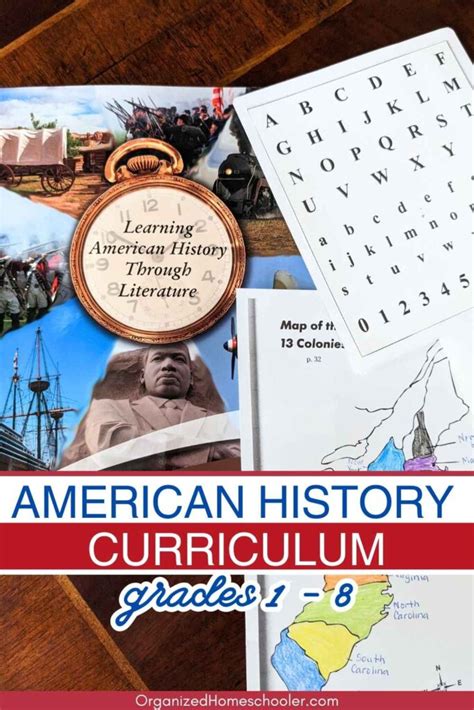Introduction

The American history curriculum holds a pivotal role in shaping the minds of future generations. It offers a lens through which students interpret the past, understand the present, and envision the future. Yet, traditional approaches to history education often fall short of meeting the complex demands of the 21st century. This article explores a transformative American history curriculum that empowers students with critical thinking skills, a nuanced understanding of historical events, and a deep appreciation for the diverse perspectives that have shaped American society.
Pain Points of Traditional American History Education
- Overemphasis on memorization: Traditional curricula often prioritize memorization of facts and dates, neglecting the development of analytical and critical thinking skills.
- Lack of diversity: Curricula frequently overlook the contributions and experiences of marginalized groups, presenting a narrow and incomplete view of American history.
- Disconnect from present-day issues: Students often struggle to connect historical events to contemporary issues, limiting the relevance and impact of history education.
Motivations for Redefining the American History Curriculum
- Foster critical thinking: A revamped curriculum develops students’ ability to analyze, evaluate, and synthesize historical information, preparing them for a world awash with information.
- Promote historical literacy: By expanding the scope of historical perspectives, students gain a more comprehensive understanding of the complexities and biases inherent in historical narratives.
- Enhance civic engagement: History education empowers students to engage in informed civic discourse, actively participate in their communities, and contribute to the preservation of democracy.
Pillars of a Transformative American History Curriculum
- Primary source analysis: Engage students with primary documents, artifacts, and oral histories to foster a deep understanding of past events and perspectives.
- Historical inquiry: Encourage students to ask meaningful questions, conduct research, and develop evidence-based arguments, fostering critical thinking and problem-solving skills.
- Multiple perspectives: Present diverse perspectives on historical events, including those of marginalized groups, to provide a comprehensive and balanced view of American history.
- Interdisciplinary connections: Integrate history with other disciplines, such as social studies, economics, and literature, to build a holistic understanding of the interconnectedness of human experiences.
- Technology integration: Utilize technology to enhance student engagement, access primary sources, and facilitate collaborative learning.
Benefits of a Transformed American History Curriculum
- Improved critical thinking skills: Students develop the ability to critically evaluate information, identify biases, and draw informed conclusions.
- Enhanced historical literacy: Students gain a deeper understanding of historical events, perspectives, and the complexities of historical narratives.
- Increased civic engagement: Students become more engaged in civic discourse, informed participants in their communities, and active advocates for justice and equality.
- Long-term impact: A transformative curriculum fosters a lifelong love of learning, critical thinking, and a deep appreciation for the diverse perspectives that have shaped American society.
Table 1: Historical Inquiry in Action
| Activity | Description |
|---|---|
| Document analysis: Students analyze primary and secondary sources to identify multiple perspectives and develop historical arguments. | |
| Historical research: Students conduct research to answer historical questions, develop research skills, and present their findings. | |
| Mock trials: Students assume the roles of historical figures and participate in mock trials to simulate historical events and develop an understanding of legal processes. |
Table 2: Integrating History with Other Disciplines
| Discipline | Integration |
|---|---|
| Social studies: Explore historical events in relation to geography, political science, and sociology to gain a multifaceted understanding of social and political processes. | |
| Economics: Analyze the economic factors that have influenced historical events and the development of economic systems. | |
| Literature: Examine historical events through literary works to gain insights into the cultural and social contexts of the past. |
Table 3: Pros and Cons of Technology Integration
| Pros | Cons |
|---|---|
| Enhanced engagement: Technology can make history more engaging and accessible to students. | Potential distractions: Technology can also be distracting if not used appropriately. |
| Access to primary sources: Online databases and digital archives provide access to a wider range of primary sources. | Digital divide: Not all students have equal access to technology. |
| Collaborative learning: Technology can facilitate collaboration and peer-to-peer learning. | Lack of face-to-face interaction: Online learning can limit opportunities for face-to-face interaction. |
Table 4: Statistics on the Importance of American History Education
| Statistic | Source |
|---|---|
| 93% of Americans believe that history is important for understanding current events. | Gallup |
| 78% of teachers believe that American history education is essential for students to develop critical thinking skills. | National Council for the Social Studies |
| 65% of college graduates say that their American history education has made them more informed and engaged citizens. | Pew Research Center |
Conclusion
Redefining the American history curriculum is an imperative for fostering a generation of critical thinkers, historically literate citizens, and informed participants in a complex and rapidly changing world. By embracing primary source analysis, historical inquiry, multiple perspectives, interdisciplinary connections, and technology integration, educators can empower students with the knowledge, skills, and perspectives necessary to navigate the challenges and opportunities of the 21st century. A transformative American history curriculum ensures that generations to come understand the past, engage with the present, and shape the future with wisdom and purpose.
